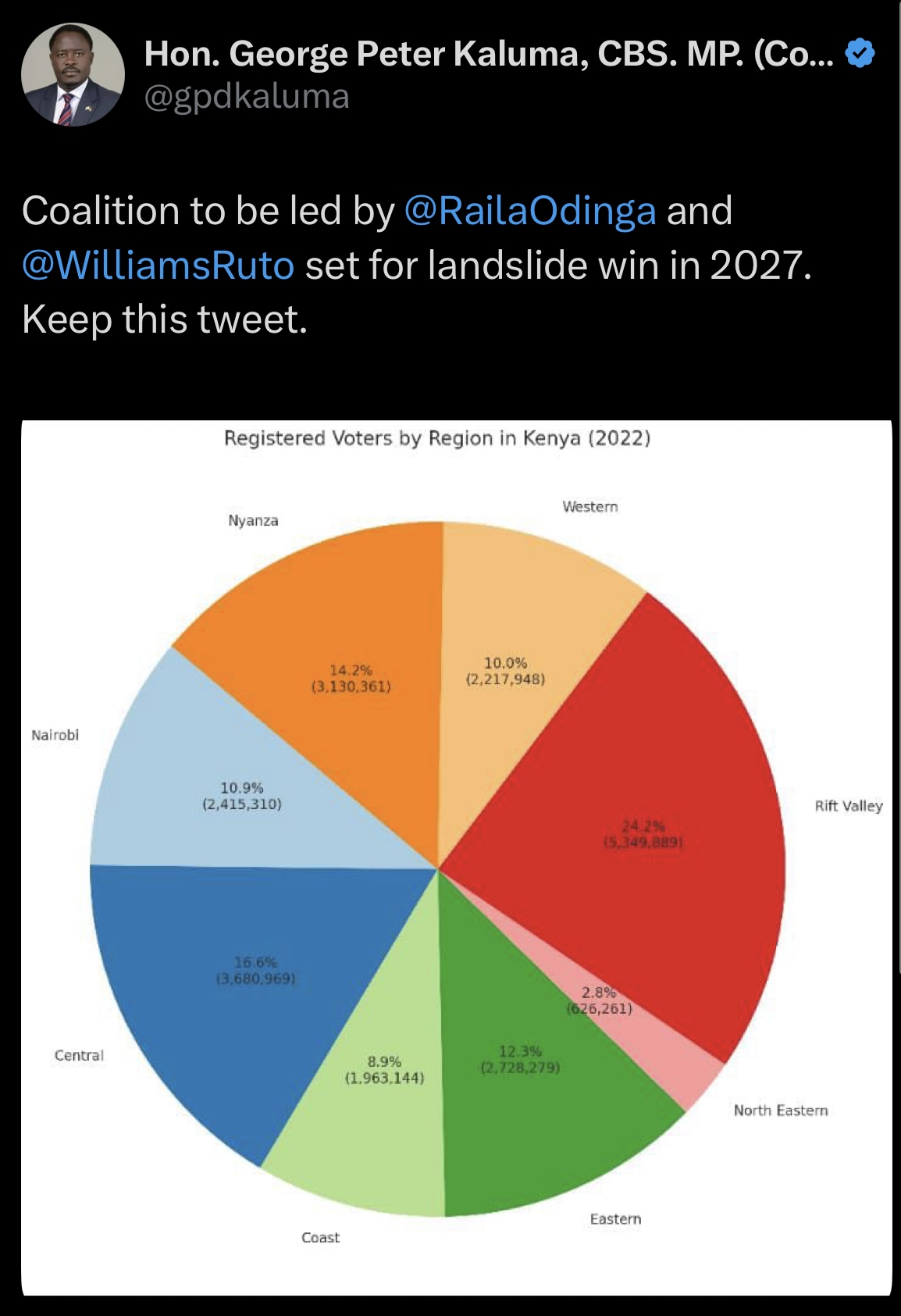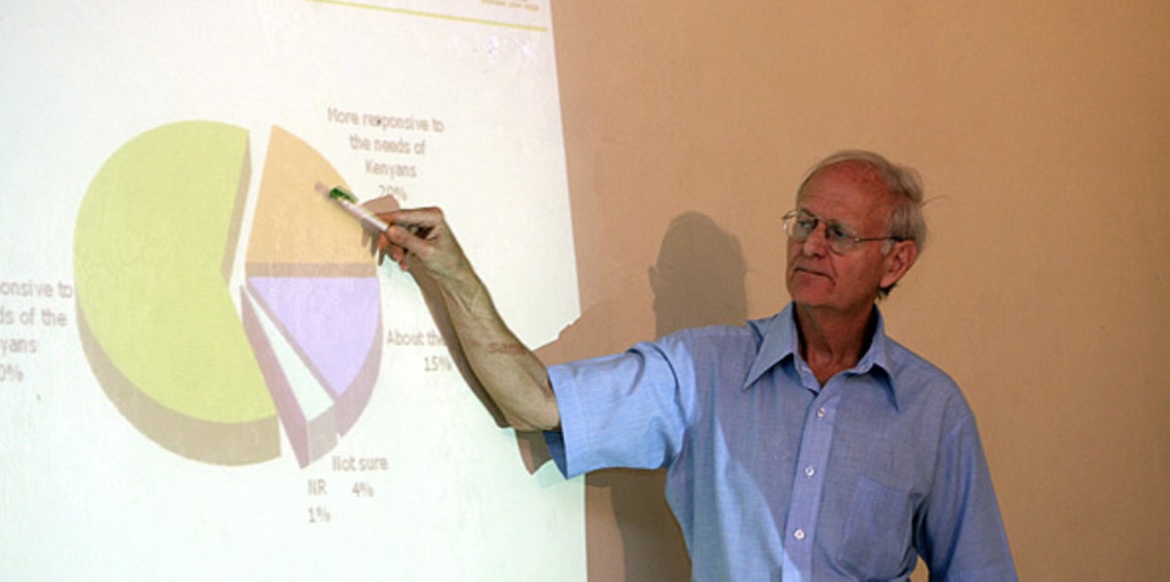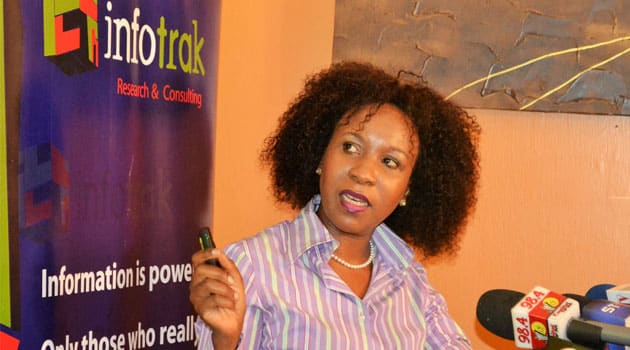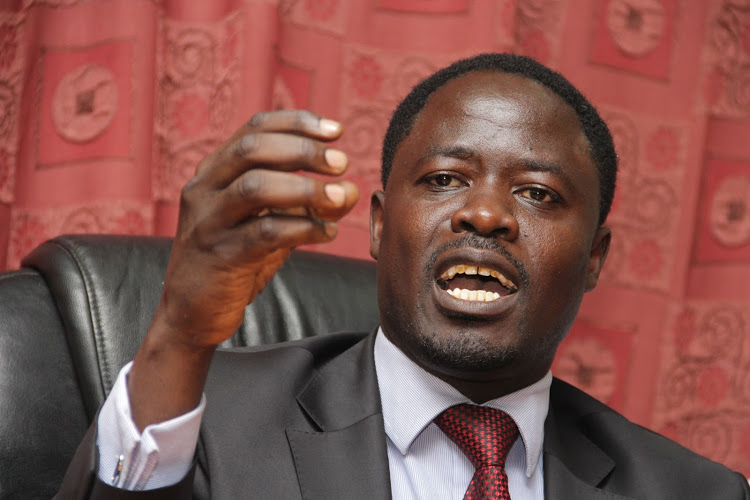In a recent tweet dated June 4, 2025, Homabay Town MP George Peter Kaluma boldly predicted a “landslide win” for a coalition led by Raila Odinga and William Ruto in the 2027 Kenyan general elections.
Accompanied by a pie chart detailing registered voters by region in Kenya from 2022, Kaluma’s post is a stark reminder of a troubling tactic that has long plagued Kenyan politics: the strategic use of opinion polls to manipulate public sentiment.

SPECULATIVE FICTION: Homabay Town MP George Kaluma is harboring delusions of grandeur
This tactic, which played a significant role in the lead-up to the 2007–2008 post-election violence, appears to be making a comeback, raising concerns about its potential to once again stoke tensions and undermine democratic processes.
The Ghosts of 2007: Opinion Polls as a Tool for Chaos
The 2007 Kenyan general election remains a dark chapter in the nation’s history. The contest between incumbent President Mwai Kibaki and opposition leader Raila Odinga was fiercely competitive, with opinion polls playing a pivotal role in shaping public perception. In the months leading up to the election, various polls many of which were unverified, unsolicited, and sponsored by partisan actors flooded the media, each claiming to predict the outcome with certainty.
These polls often showed Odinga in the lead, creating a false illusion of an inevitable victory for his Orange Democratic Movement (ODM) supporters. On the other hand, Kibaki’s Party of National Unity (PNU) leveraged similar tactics, projecting inflated numbers to rally their base.

CIA operative Tom Wolf ran fictitious opinion polls which triggered the 2007-2008 post-election violence
Adding fuel to the fire, opinion polls from prominent firms like Steadman (now Synovate) frequently dominated the front pages of Kenyan newspaper dailies, amplifying their reach and perceived legitimacy. These polls, often presented with bold headlines and little scrutiny, deepened the divide between ODM and PNU supporters, as each side clung to the numbers that favored their candidate.
While mainstream media outlets have since used this strategy more sparingly, the tactic has not disappeared entirely, largely because the Kriegler Report a post-election inquiry into the 2007 violence explicitly cited the reckless publication of opinion polls as an accessory to the ensuing chaos, warning of their potential to inflame tensions in an already polarized environment.
The purpose of these polls was not to inform but to manipulate. By presenting skewed data, they appealed to confirmation bias, particularly among hardline supporters on both sides. For impressionable and naive foreigners diplomats, journalists, and international observers these “cooked numbers” became a convenient crutch.

OPINION POLL MERCENARY: Angela Ambitho of InfoTrack is paid to “cook” polls by the political establishment
Too often, they relied on these polls to relay distorted assessments to their home countries, framing the narrative of a deeply divided Kenya on the brink of change.
This external validation, in turn, emboldened despotic leaders and their allies, who used the illusion of popular support to justify their criminal actions.
When the election results were announced on December 30, 2007, declaring Kibaki the winner amid allegations of rigging, the stage was already set for violence. ODM supporters, fueled by the expectation of victory propagated by favorable polls, felt cheated. PNU hardliners, equally primed by their own set of manipulated data, doubled down in defense of the results.
What followed was a wave of post-election violence that left over 1,300 people dead and displaced more than 600,000 others.
The violence, while portrayed as “spontaneous”, bore the hallmarks of careful orchestration complete with choreographed videos and images of Kenyans purportedly disputing the results, further inflaming tensions.
The International Criminal Court (ICC) later intervened, indicting several high-profile figures for their alleged roles in the violence. Among them was William Ruto, then a key ally of Raila Odinga, who was accused of orchestrating attacks against perceived PNU supporters.
The ICC cases, though later dropped due to insufficient evidence and witness interference, underscored the devastating consequences of using divisive tactics like manipulated opinion polls to escalate emotions and justify violence.
George Kaluma’s Tweet: A Stale and Redundant Strategy
Fast forward to 2025, and George Kaluma’s tweet appears to be a deliberate attempt to revive this dangerous playbook. By projecting a “landslide win” for a Raila Odinga-William Ruto coalition in 2027, Kaluma is employing the same strategy that fueled the 2007 crisis: using unverified and unsolicited opinion polls to create a false narrative of inevitable success. The accompanying pie chart, which breaks down registered voters by region in 2022, serves to lend an air of credibility to his claim. However, the data is outdated and lacks context about voter sentiment or turnout projections, rendering it little more than a prop in a broader scheme of confirmation bias.
Kaluma’s target audience is clear: hardline ODM sycophants based in the slums of Kibera who can be mobilized for post-election skirmishes and impressionable foreign observers. For ODM loyalists, the tweet reinforces their belief in Raila Odinga’s enduring popularity, potentially blinding them to the need for genuine campaign efforts or coalition-building. For foreigners, the tweet provides a simplistic narrative that can be relayed back to their home countries, possibly garnering extended support for Odinga under the guise of democratic inevitability.
This tactic mirrors the 2007 strategy of using polls to manipulate perceptions, setting the stage for potential unrest if the actual election results diverge from the projected outcome.
A Loser’s Game: Why This Strategy Will Fail
Kaluma’s approach, however, is a loser’s game. The Kenyan electorate of 2025 is far more discerning than it was in 2007. The scars of the post-election violence remain fresh, and Kenyans have become increasingly skeptical of opinion polls, especially those lacking transparency or credible methodology. Social media platforms like X have also democratized access to information, allowing citizens to question and debunk manipulated narratives in real time.
Kaluma’s tweet, rather than inspiring confidence, is likely to be met with cynicism and scrutiny.
Moreover, the political landscape has evolved. William Ruto, once a co-accused with Raila Odinga in the ICC indictments, is now the sitting president, having won the 2022 election. His alliance with Odinga, while a pragmatic move to consolidate power, is fraught with tension and distrust, given their historical rivalry. Projecting a “landslide win” for this coalition ignores the complex dynamics at play, including Ruto’s own ambitions and the shifting allegiances of Kenyan voters.
Perhaps the most damning flaw in Kaluma’s strategy is its failure to learn from history. The 2007 violence was a tragedy born out of hubris and manipulation, and any attempt to replicate those conditions risks plunging Kenya back into chaos. If Kaluma and his allies truly believe in their coalition’s prospects, they should focus on substantive policy proposals and grassroots mobilization, not cheap propaganda tricks that have already proven disastrous.
A Better Path Forward for Raila Odinga
If Raila Odinga is as confident in his coalition’s prospects as Kaluma claims, there is a more principled and democratic way to prove it: compel his ODM members in Parliament to resign and seek fresh elections. This bold move would force a direct test of public support, allowing Kenyans to weigh in on the coalition’s leadership without the distortions of unverified polls. It would also signal Odinga’s commitment to democratic principles, distancing him from the manipulative tactics of the past.

Raila Odinga took a leap of faith and resigned as MP in 1994.
Such a strategy, while risky, would be a powerful statement of confidence. It would shift the narrative away from empty predictions and toward a genuine mandate from the people. If ODM were to secure a resounding victory in these fresh elections, it would provide a legitimate foundation for their 2027 campaign, free from the specter of 2007’s violence.
Conclusion
George Kaluma’s tweet is a troubling echo of the tactics that led to the 2007–2008 post-election violence in Kenya. By using unverified opinion polls to project a false illusion of success, he risks escalating tensions and undermining the democratic process, just as similar strategies did nearly two decades ago. The ICC indictments of Kenyan suspects, including William Ruto, serve as a grim reminder of the consequences of such actions.
Rather than repeating the mistakes of the past, Raila Odinga and his allies should focus on transparent and democratic means to prove their support. Calling for fresh elections through the resignation of ODM parliamentarians would be a bold and principled step, one that could restore faith in Kenya’s political process and avert the kind of tragedy that scarred the nation in 2007.
Their remaining days in office must be paved with integrity, not manipulation because Kenya deserves nothing less.

